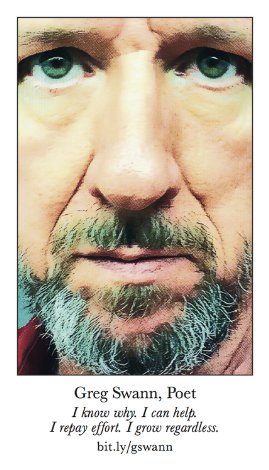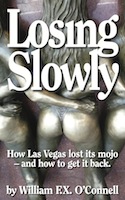 By way of @bensima, who I met at The 21Convention, a lovely story about hi-tech hearing aids opening up the world of music to a severely deaf man:
By way of @bensima, who I met at The 21Convention, a lovely story about hi-tech hearing aids opening up the world of music to a severely deaf man:
I’ve never understood it.
My whole life I’ve seen hearing people make a fool of themselves singing their favorite song or gyrating on the dance floor. I’ve also seen hearing people moved to tears by a single song. That was the hardest thing for me to wrap my head around.
I was born profoundly deaf and all music sounded like trash through my hearing aids.
That is until a couple days ago when I put on a new pair of hearing aids for the first time in years.
The first thing I heard was my shoe scraping across the carpet; it startled me. I have never heard that before and out of ignorance, I assumed it was too quiet for anyone to hear.
I sat in the doctor’s office frozen as a cacophony of sounds attacked me. The whir of the computer, the hum of the AC, the clacking of the keyboard, and when my best friend walked in I couldn’t believe that he had a slight rasp to his voice. He joked that it was time to cut back on the cigarettes.
That night, a group of close friends jump-started my musical education by playing Mozart, Rolling Stones, Michael Jackson, Sigur Ros, Radiohead, Elvis, and several other popular legends of music.
Being able to hear the music for the first time ever was unreal.
From the wacky world of academic “science” comes news that exercising self-control can help you to, you know, control yourself. I wish I were making this up:
Thinking about the big picture instead of the little steps required along the way can help to give us the self-control we need to reach a goal, according to new research.
Woah! You don’t say! Science is so much in love with determinism that anyone who concedes the existence of free will deserves a medal. But don’t get too excited. Even an academic who has accidentally discovered reality can manage to obscure the truth with inane jargon:
Ultimately, the study suggests that “high-level construal (the use of cognitive abstraction to extract the essential and goal-relevant features common across a class of events), relative to low-level construal (the process of highlighting the incidental and idiosyncratic features that render a particular event unique), promotes self-control,” the researchers wrote in the study.
I can actually translate that: It says, “Thinking in concepts is more likely to result in the realization of your goal, as compared with thinking in concretes.” It’s amazing what you can learn if you’re willing to piss away enough money on academics with a death-grip on the obvious.
The world of Dancing Bears is one robot richer: Nico the Robot Recognizes Self in the Mirror. This is a lie, but it’s a lie you will hear all the time if you attend to popular-media discussions of artificial intelligence. There is no such thing as artificial intelligence, there is only human intelligence encoded in software and hardware. Accordingly, most reporting on artificial intelligence is just more of the Dancing Bear Fallacy:
“Dancing bears are just like us!” Either animals such as apes or dolphins (or even “artificially intelligent” computer programs) are just as smart as you, or you are just as flailingly ignorant as an animal.
In fact, Nico the Robot has been programmed with code that will induce it to issue some pre-programmed response when its digital video software identifies shapes associated with its own physical appearance. Nico is precisely as “intelligent” as your car is when it says, “The door is ajar.” Neither the robot nor your car is aware of anything, neither “knows” anything and neither is capable of discovering anything. These are all attributes of conceptual consciousness, which is found only in human beings and which is absent from all other entities.
It is worth noting that Nico’s grand accomplishment consists of “passing” a Dancing Bear “test” that originated in the biological sciences:
Nico is part of an experiment to see whether a robot can tackle a test of self-awareness called the mirror test. To pass the test an animal or a robot has to recognise that a mark on the body it sees in the mirror is on its own body. Only dolphins, orcas, elephants, magpies, humans and a few other apes have passed the test so far.
The Dancing Bear Fallacy conflates elaborate pattern-matching — at which computer software can easily eclipse all non-human animals — with conceptual awareness — which only human beings possess. You are being lied to all the time by people you mistakenly trust to tell you the truth.
The New York Times wonders How Long Do You Want to Live? It’s a pretty conservative story about life-extension technology, but even the Times can’t miss the exciting news on the horizon.
Finally, a couple-three notes from FreeTheAnimal.com. Richard Nikoley’s Free the Animal, the Book has been released in a revised and updated version. This is hardcore paleo living, and I would be out of my depth to say any more about it. Richard is very forthcoming with both free information and opportunities to share the book with people you love.
Richard has been very forthcoming with me, as well, publishing Man Alive! in chapters all summer long, and publishing a new essay by me this week: Fifty Shades of bleak: Looking for love everywhere it isn’t. That post was picked up and translated by a Francophone blog: Chercher l’amour partout où il n’est pas. I can almost read French by translating either to English or Latin, but Richard tells me it’s a faithful translation.















